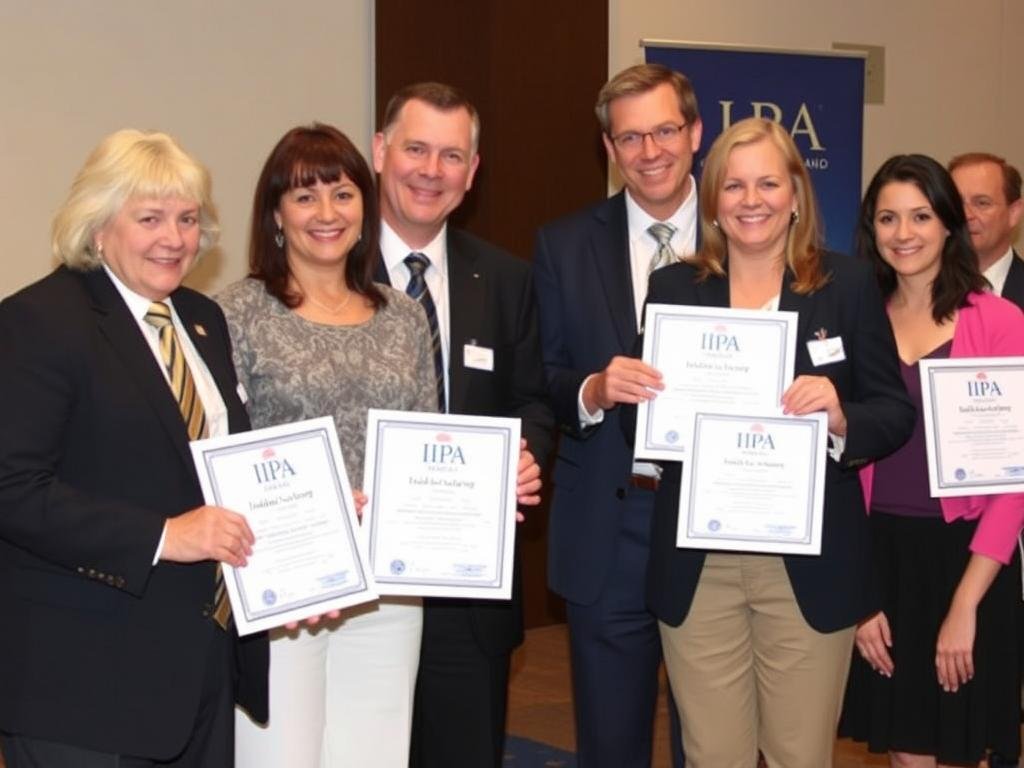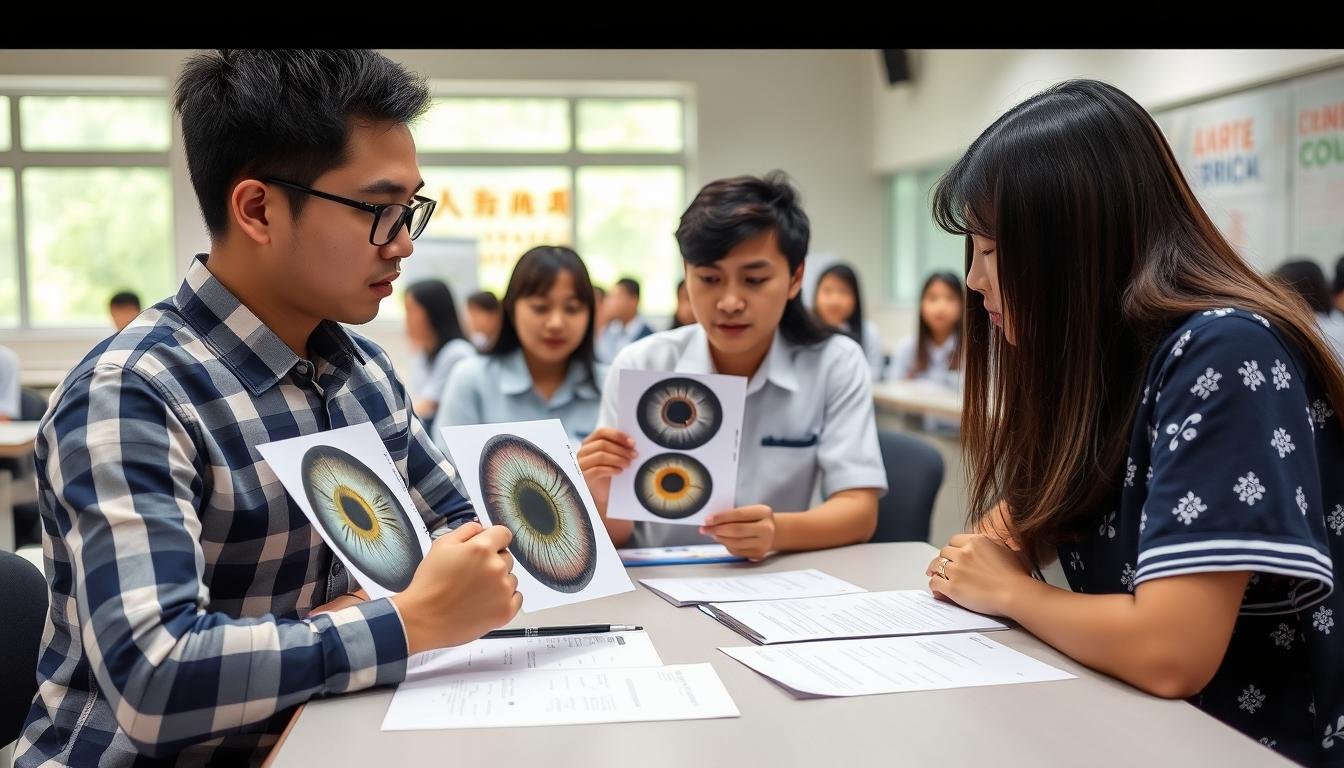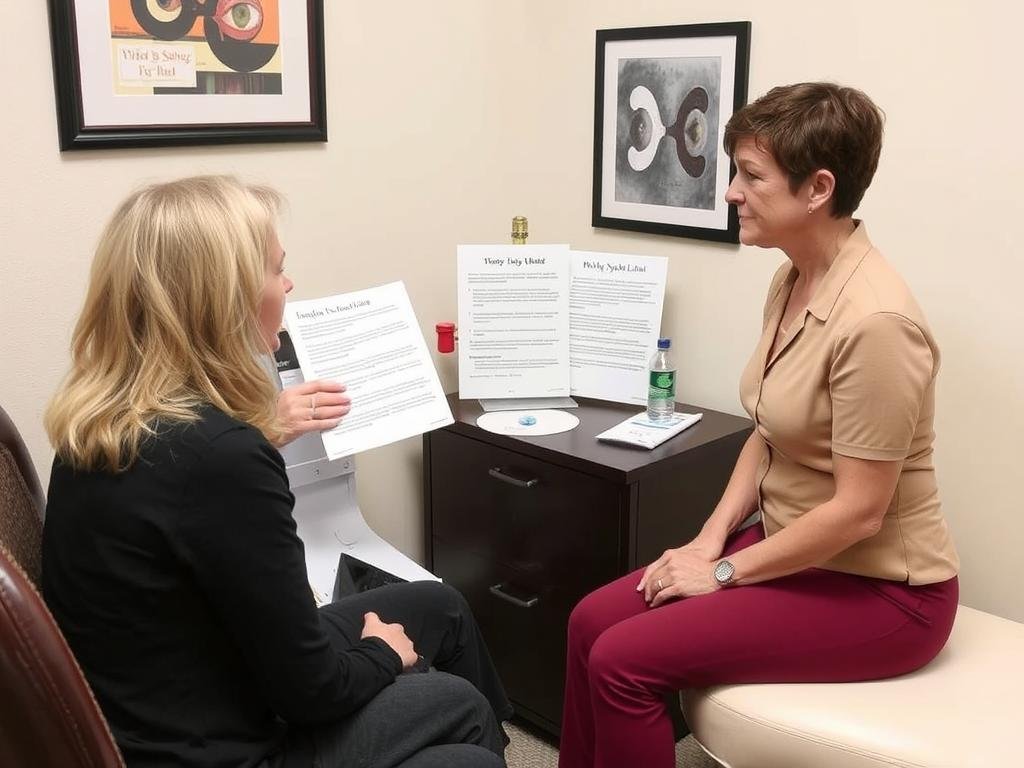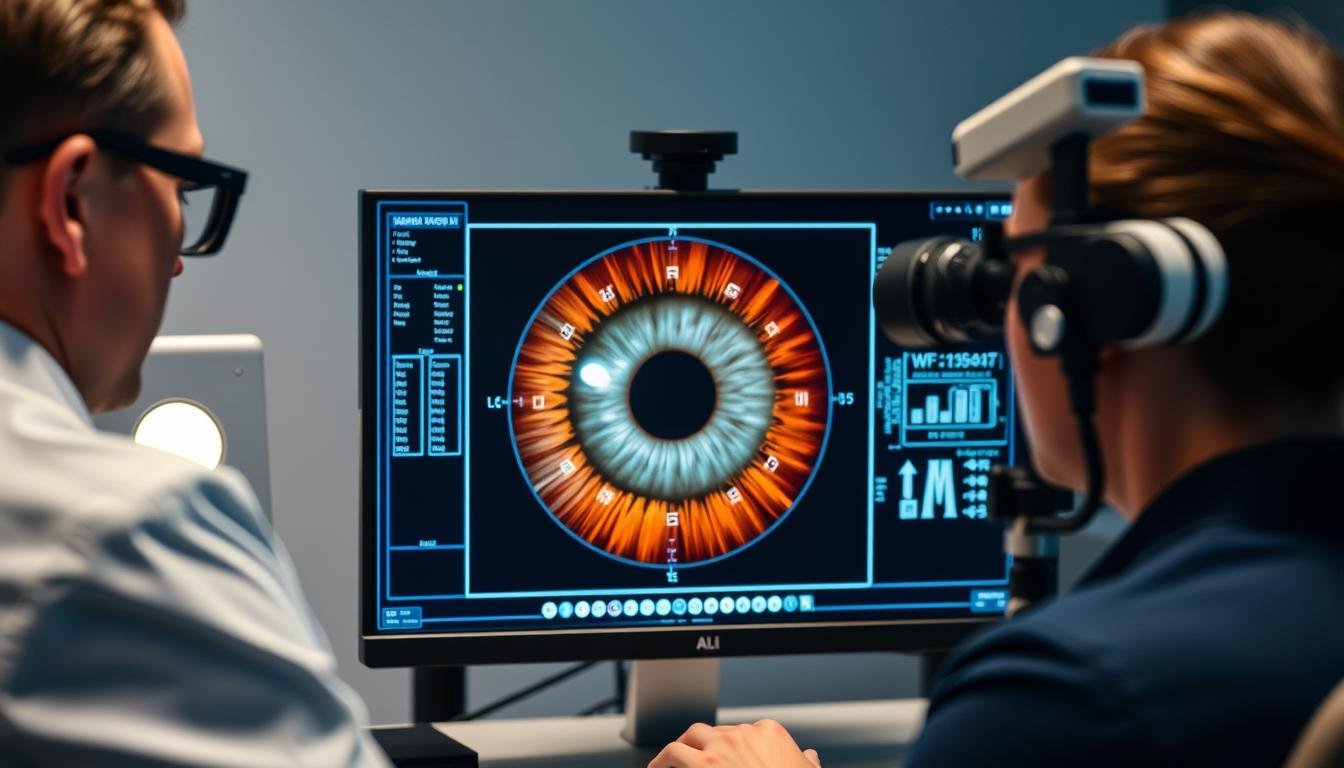Die Praxis von Iridologie—analyzing patterns, colors, and other characteristics of the iris to determine information about a person’s health—has gained significant attention in the alternative health community. For practitioners seeking to establish credibility in this field, Iridologische Zertifizierung becomes an essential consideration. However, a common question arises: Is an Iridologische Zertifizierung recognized internationally, and what value does it hold across different countries and health systems?This comprehensive guide explores the global landscape of Iridologische Zertifizierung, examining how different countries view these credentials, which certifying bodies carry the most weight internationally, and what practitioners should consider when pursuing certification with global recognition in mind.
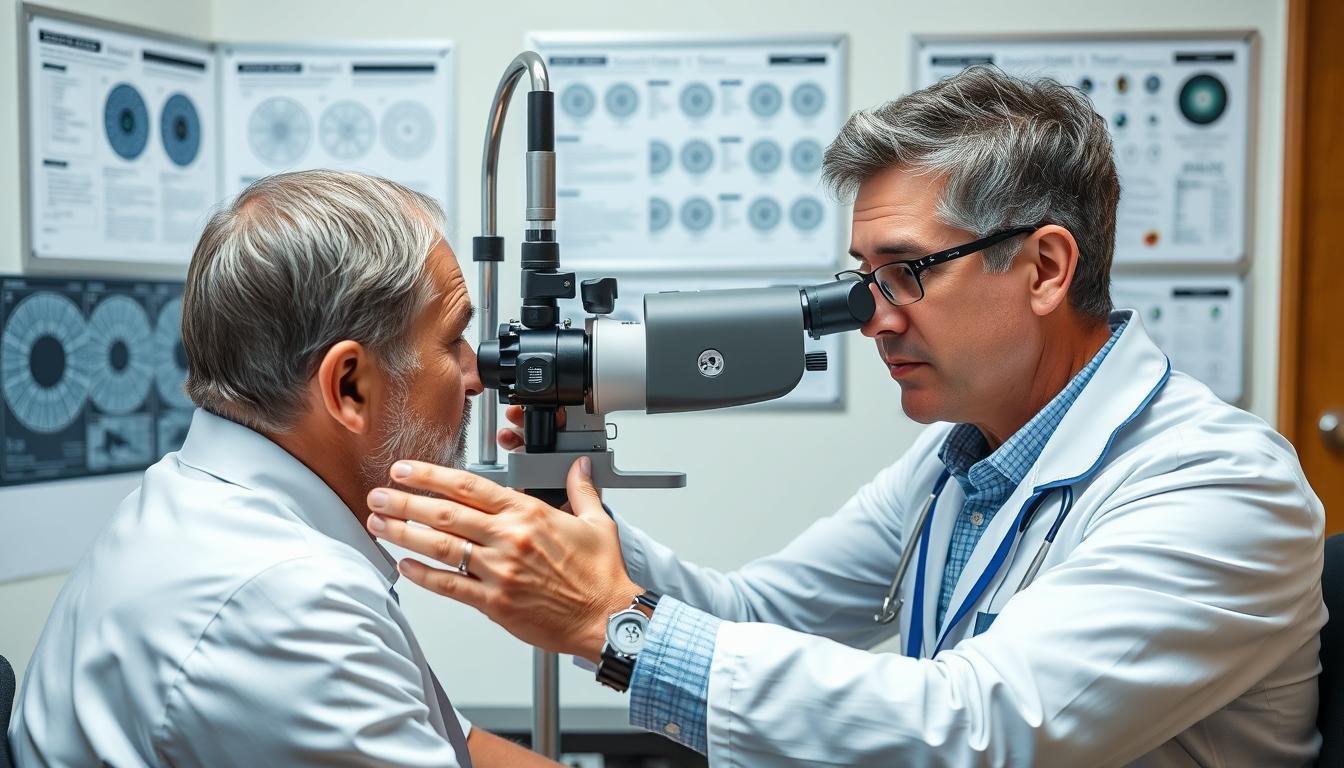
Key Takeaways About Iridology Certification Recognition
- International recognition varies significantly by country and region
- Organizations like IIPA (International Iridology Practitioners Association) provide widely accepted credentials
- European countries generally have more established recognition frameworks
- Complementary certifications can enhance international credibility
- Legal status of iridology practice differs across jurisdictions
- Continuing education is essential for maintaining global recognition
Verständnis Iridologische Zertifizierung: A Global Overview
Professional iridology assessment requires proper training and certification
Iridology certification represents a formal recognition that a practitioner has completed specific education and training in the analysis of the iris for health assessment purposes. Certification typically involves studying iris topography, various iris signs, constitutional types, and the correlation between iris markings and body systems.
Unlike medical licensing, which is strictly regulated by governmental bodies, Iridologische Zertifizierung is primarily offered through private organizations, schools, and associations dedicated to this alternative health practice. This creates a diverse landscape of credentials with varying levels of recognition.
Core Components of Comprehensive Iridologische Zertifizierung
Most reputable certification programs include the following elements:
- Anatomy and physiology of the eye
- Iris mapping and chart systems
- Constitutional iridology analysis
- Identification of iris signs and markings
- Clinical application and case studies
- Ethical considerations and scope of practice
- Integration mit anderen Methoden zur Gesundheitsbewertung
The depth and breadth of these components often determine how widely a certification is recognized internationally.
Key Accrediting Bodies for Iridologische Zertifizierung
Several organizations have emerged as leaders in providing Iridologische Zertifizierung that carries weight across international borders. Understanding these key players is essential for practitioners seeking globally recognized credentials.
International Iridology Practitioners Association (IIPA)
The IIPA stands as one of the most recognized global authorities in iridology. Founded to establish and maintain professional standards in the field, IIPA certification is acknowledged in numerous countries across North America, Europe, Australia, and parts of Asia.
IIPA offers several levels of certification:
- Certified Comprehensive Iridologist (CCI)
- Certified Iridology Instructor (CII)
- Fellowship status for advanced practitioners
IIPA certification requires completion of an approved curriculum, practical experience, and passing comprehensive examinations. Their standards are particularly respected in the United States, Canada, Australia, and increasingly in European countries.
Ready to Pursue Internationally Recognized Certification?
Explore IIPA-approved training programs and take the first step toward a globally respected Iridologische Zertifizierung.
Discover IIPA Programs
European Iridology Schools and Associations
Europe has a rich history of iridology practice, with several countries hosting influential certification bodies:
German Heilpraktiker Associations
Germany recognizes iridology within its Heilpraktiker (health practitioner) system. Certifications from organizations like the Naturheilverfahren und Traditionelle Medizin e.V. carry significant weight throughout Europe.
Italian Iridology Association
The Italian school of iridology, led by pioneers like Daniele Lo Rito, offers certifications that are particularly respected in Mediterranean countries and increasingly recognized worldwide.
Country-Specific Recognition of Iridologische Zertifizierung
The level of recognition for Iridologische Zertifizierung varies significantly across different regions and countries. Understanding these variations is crucial for practitioners planning to work internationally.
Europe’s Standards for Iridologische Zertifizierung
European countries generally have more established frameworks for recognizing alternative health practices, including iridology:
| Land |
Erkennungsstufe |
Regulatory Framework |
Notable Certification Bodies |
| Deutschland |
Hoch |
Heilpraktiker system |
DGIM (German Society for Iridology) |
| Italien |
Hoch |
Complementary medicine framework |
SIMO (Italian School of Iridological Medicine) |
| Vereinigtes Königreich |
Mäßig |
Complementary and Natural Healthcare Council |
Gilde der naturheilkundlichen Iridologen |
| Frankreich |
Mäßig |
Non-conventional medicine regulations |
FIIM (French Institute of Iridology) |
| Spanien |
Mäßig |
Varies by region |
APENB (Spanish Association of Naturopathy) |
Iridologische Zertifizierung in the United States vs. Australia
These two countries represent different approaches to recognizing iridology credentials:
Vereinigte Staaten
In the US, Iridologische Zertifizierung is not regulated at the federal level. Recognition varies by state, with some states having more defined frameworks for complementary health practitioners. Organizations like IIPA provide the most widely accepted certifications, though practitioners typically operate under various scopes of practice depending on their primary healthcare credentials.
Australien
Australia has a more structured approach through the Health Training Package system. Iridology is often recognized as part of broader natural therapy qualifications. The Complementary Medicine Association (CMA) and Australian Traditional Medicine Society (ATMS) provide pathways for recognition that allow practitioners to obtain professional insurance and practice legitimately.
Asian and South American Recognition
Emerging markets for iridology show varying levels of certification recognition:
- India: Growing recognition through Ayurvedic and naturopathic institutions
- China: Increasing integration with Traditional Chinese Medicine frameworks
- Brazil: Strong recognition with several established schools and associations
- Argentina: Formal recognition within complementary medicine regulations
- Japan: Limited but growing recognition, primarily through international certifications
How to Verify the Validity of Your Iridologische Zertifizierung
Ensuring your certification will be recognized internationally requires due diligence before enrolling in a program.
Criteria for Evaluating Iridologische Zertifizierung Programme
Consider these factors when assessing the international validity of a certification program:
Accreditation Status
Verify if the program is accredited by recognized bodies in multiple countries or regions. Look for affiliations with established health or educational institutions.
Lehrplantiefe
Comprehensive programs covering anatomy, physiology, iris analysis techniques, and clinical applications tend to have broader international recognition.
Instructor Credentials
Programs led by internationally recognized practitioners and educators typically carry more weight across borders.
Questions to Ask Certification Providers
- In which countries is your certification currently recognized?
- Do you have reciprocal arrangements with other international iridology organizations?
- Can graduates obtain professional liability insurance with this certification?
- What continuing education requirements exist to maintain certification validity?
- Do you provide assistance with international recognition challenges?
Uncertain About Your Certification’s Recognition?
Get a professional assessment of your current credentials or find programs with strong international recognition.
Request Certification Assessment
Enhancing the International Recognition of Your Iridologische Zertifizierung
Beyond obtaining a basic certification, several strategies can help ensure your credentials are recognized more widely around the world.
Complementary Qualifications
Pairing your Iridologische Zertifizierung with related qualifications can significantly enhance international recognition:
Health-Related Credentials
- Naturopathy certification
- Nutrition qualifications
- Herbalism credentials
- Traditional medicine certifications
Business and Professional Development
- Practice management certification
- Health coaching credentials
- International business understanding
- Language proficiency certificates
Continuing Education and Professional Development
Maintaining and upgrading your credentials through ongoing education demonstrates commitment to professional standards:
- Attend international conferences and workshops
- Participate in research initiatives
- Publish case studies or articles in respected journals
- Join international professional associations
- Obtain advanced or specialized certifications
Legal Considerations for Iridologische Zertifizierung Holders
Understanding the legal landscape is crucial for practitioners hoping to use their certification internationally.
Scope of Practice Limitations
Even with recognized certification, practitioners must understand legal boundaries:
What Certified Iridologists Can Typically Do
- Assess iris patterns and markings
- Identify potential areas of weakness or concern
- Suggest lifestyle modifications
- Recommend complementary approaches
- Provide educational information
Legal Limitations in Most Countries
- Cannot diagnose medical conditions
- Cannot prescribe pharmaceutical medications
- Cannot claim to cure or treat diseases
- Cannot interfere with conventional medical treatment
- Cannot make guarantees about health outcomes
Insurance and Liability Considerations
Professional practice requires appropriate protection:
- Professional liability insurance requirements vary by country
- Some insurers only recognize specific certification bodies
- Client waivers and informed consent are essential regardless of location
- Clear documentation practices help mitigate legal risks
Global Career Opportunities with Iridologische Zertifizierung
A recognized certification opens various professional pathways across different countries and settings.
Practice Settings for Certified Iridologists
Depending on local regulations and recognition levels, certified practitioners can work in:
Privatpraxis
Establishing independent clinics or consultation services, either standalone or in partnership with other practitioners. Most common in countries with established recognition frameworks.
Integrative Health Centers
Collaborating with conventional and complementary practitioners in multidisciplinary settings. Growing opportunity in North America, Europe, and Australia.
Wellness Industry
Working with spas, retreats, and wellness centers to provide assessments as part of holistic health programs. Particularly popular in tourism-focused regions.
International Mobility for Certified Practitioners
Factors affecting your ability to practice across borders include:
- Visa and work permit requirements for health practitioners
- Recognition of foreign credentials by local associations
- Language proficiency requirements
- Cultural understanding of alternative health approaches
- Networking with established practitioners in target countries
Expand Your Professional Horizons
Connect with a global network of iridology practitioners and discover international opportunities with your certification.
Join International Iridology Network
Success Stories: Internationally Practicing Certified Iridologists
“My IIPA certification has allowed me to practice in three different countries over the past decade. While I needed to complete some additional requirements in each location, the core credential was recognized and respected, opening doors that would have otherwise remained closed.”
— Maria Sanchez, Certified Comprehensive Iridologist practicing in Spain, Germany, and Brazil
“When I relocated from Australia to Canada, I was concerned about whether my certification would transfer. By having both IIPA recognition and complementary qualifications in nutrition, I was able to establish my practice within months of arrival, with full recognition from local holistic health associations.”
— James Wilson, Iridologist and Nutritional Consultant
Future Trends in International Iridologische Zertifizierung Recognition
The landscape of Iridologische Zertifizierung recognition continues to evolve, with several emerging trends:
Standardization Efforts
International organizations are working toward more unified standards for certification and practice:
- Development of core competency frameworks across countries
- Creation of international registries for certified practitioners
- Establishment of mutual recognition agreements between certifying bodies
- Integration with broader complementary medicine standards
Technology and Digital Recognition
Digital innovations are changing how certifications are verified and recognized:
- Blockchain-verified credentials that can be instantly authenticated globally
- Online verification systems for checking practitioner credentials
- Digital portfolios showcasing continuing education and practice experience
- Telehealth frameworks allowing practice across jurisdictions
Frequently Asked Questions About International Iridologische Zertifizierung
Is there a single Iridologische Zertifizierung that is recognized worldwide?
No, there is no single universally recognized certification. However, credentials from organizations like the International Iridology Practitioners Association (IIPA) are widely accepted across many countries. The level of recognition varies by region, with European certifications generally having strong recognition within the EU, while North American certifications may have different recognition patterns.
How long does it typically take to complete an internationally recognized Iridologische Zertifizierung?
Comprehensive certification programs typically require 100-300 hours of study, which translates to approximately 6-18 months of part-time study. More intensive programs may be completed in 3-6 months of full-time study. Programs with stronger international recognition often have more extensive requirements, including supervised practice hours and comprehensive examinations.
Can I practice iridology legally with an online certification?
The legal status depends on the country and the certification’s recognition. Many reputable organizations now offer online training components, but the most recognized programs typically include some in-person practical training or assessment. Before investing in an online program, verify that it’s recognized by established iridology associations and check the legal requirements for practice in your target country.
Do I need a healthcare background to obtain internationally recognized Iridologische Zertifizierung?
While not always mandatory, having a background in healthcare (nursing, naturopathy, nutrition, etc.) significantly enhances the international recognition of your iridology credentials. Some advanced certifications and certain countries may require or strongly prefer practitioners to have foundational healthcare qualifications before specializing in iridology.
Conclusion: Navigating the Global Landscape of Iridologische Zertifizierung
The international recognition of Iridologische Zertifizierung presents a complex but navigable landscape for practitioners. While no single certification guarantees universal recognition, understanding the key players, regional differences, and complementary strategies can help practitioners maximize their global mobility and professional opportunities.
By choosing certifications from respected organizations, pursuing ongoing education, understanding legal limitations, and potentially pairing iridology with complementary qualifications, practitioners can build credentials that open doors across international borders.
As the field continues to evolve and standardization efforts progress, the path to international recognition will likely become clearer. For now, due diligence in researching certification options and understanding target markets remains essential for those seeking to practice iridology on a global scale.
Ready to Pursue Globally Recognized Iridologische Zertifizierung?
Take the first step toward a rewarding career with international opportunities. Connect with leading certification programs that meet global standards.
Entdecken Sie die Zertifizierungsoptionen














